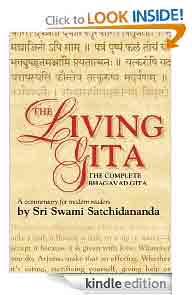An Interview with M.A. Jayashree, PhD
To hear Dr. Jayashree chant the Yoga Sutras in Sanskrit is to be transported to the time when this great text was transmitted in the oral tradition. Her melodious voice, flawless pronunciation and classical articulation of the Sanskrit, replete with meaning and the yogic vibration, is special to experience for oneself. In this interview, she explains her own fascination with the Sutras and why they continue to speak to seekers in every generation and culture, even beyond the shores of India, from whence they came.
Integral Yoga Magazine (IYM): What are the benefits of chanting the Yoga Sutras?
M.A. Jayashree (MAJ): Chanting the Yoga Sutras has a two-fold benefit. Once you have begun studying the Yoga Sutras, memorization helps in recalling the appropriate sutra in times of doubt—whether you have a doubt about your own experience or you are down because your Ashtanga practice is not progressing well. The repeated browsing mentally of the sutras’ ambiance (manana), in a certain state of mental quietude, will help in getting a flash of the real meaning and also produce the “Aha” experience—perhaps we can call it a three-dimensional understanding. Chanting and memorizing is vital for our knowledge to become wisdom. Whatever texts you study, chanting reveals itself to you in time. It is a kind of tapas, where we bring the physical mind, the rational mind and the emotional mind to a single point. There, not just understanding, but revelation happens!
IYM: What is special about Sanskrit as a vibrational language and chanting the Yoga Sutras aloud?
MAJ: In India, the ancient seers were not satisfied to have a language that was just a means of communication for day-to-day activities. They wanted a language that could touch and transform the spirit too. For this purpose they created an oral tradition called the Srutiparamapara, wherein a strictly prescribed way of listening and pronouncing the sounds, syllables, combination of syllables, words, sentences, passages and the complete sets of knowledge systems enabled the transfer from the teacher to the pupil without distortions.
The Vedic seers were also interested in chanting as the basic means of modifying the spirit, so they perfected the language, namely Sanskrit. The perfection of a language, along with the methods of rendering, leads to the effective means of communication of the knowledge at the rational level and also an attempt for a subtle transformation of the spirit at the deeper emotional and spiritual level. This was achieved by the wise combination of the sound value, the rhythm and the tune associated with the learning of the texts. This transformation has been so effective, even after five thousand years, it can be felt by those who chant, which makes superfluous the knowledge of the language to understand the meaning of the text!
Chanting aloud helps in clearing the voice and lungs, and it helps you to listen to your own voice. Repeating the same word sequence helps the mind to remember the text easily. The mind has a fantastic capability to remember the sequence of words and sentences even without knowing their meaning. This builds a link between different cells in the brain. In this age of visual predominance, this practice hones the listening skills tremendously. It brings total attention in listening. It brings perfection in pronouncing the text. It utilizes all the vocal organs, improves memory and works to extend the breath fully, leading to pranayama and a deep, meditative state. Just the sequence and combination of syllables and the vibrations produced transforms the personality.
IYM: If someone wants to study the Yoga Sutras, what is the best way to start?
MAJ: There are three levels in the methodology of the study of the Yoga Sutras. The first is the regular practice of Ashtanga Yoga, as mentioned by Patanjali, which includes the practice of yamas and niyamas, the most vital part of the journey for emancipation and liberation. Patanjali says that Yoga has to be practiced without interruption, for a long time and with a firm, positive faith that the practice will get the results. The next two levels address how we gain this firm faith in our practice. Level Two involves the memorization of the Yoga Sutras through chanting, whereby a deeper understanding of the blueprint of the journey to be under taken to reach liberation, or kaivalya, will occur. Thirdly, the repeated chanting done religiously, helps in catalyzing the process of evolution, with knowledge being replaced with revelation…
Read the rest of this article in the Spring 2010 issue of Integral Yoga Magazine.


